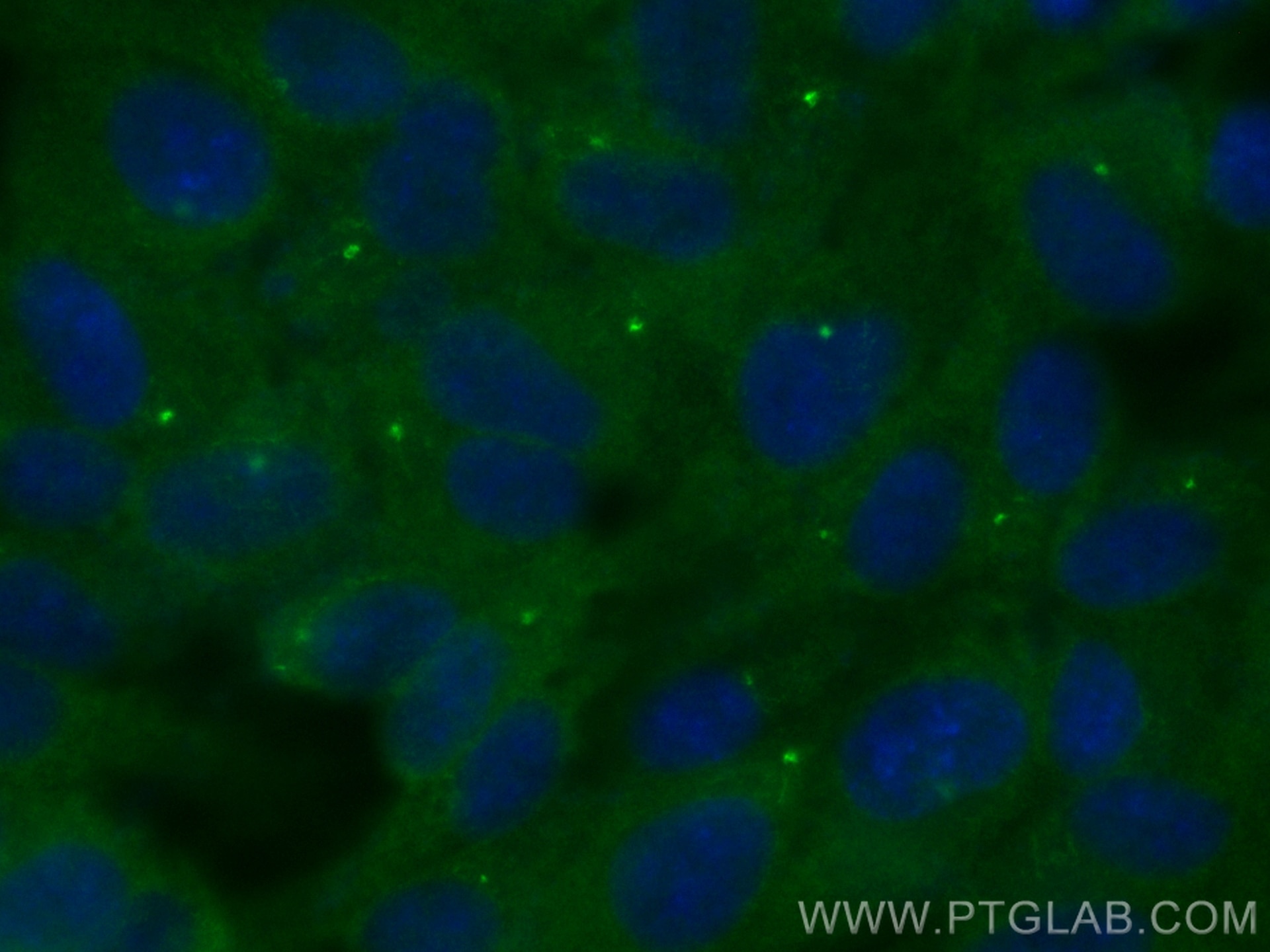Tested Applications
| Positive IF/ICC detected in | hTERT-RPE1 cells |
Recommended dilution
| Application | Dilution |
|---|---|
| Immunofluorescence (IF)/ICC | IF/ICC : 1:50-1:500 |
| It is recommended that this reagent should be titrated in each testing system to obtain optimal results. | |
| Sample-dependent, Check data in validation data gallery. | |
Product Information
CL488-83431 targets PLK2 in IF/ICC applications and shows reactivity with human samples.
| Tested Reactivity | human |
| Host / Isotype | Rabbit / IgG |
| Class | Recombinant |
| Type | Antibody |
| Immunogen | PLK2 fusion protein Ag29837 Predict reactive species |
| Full Name | polo-like kinase 2 (Drosophila) |
| Calculated Molecular Weight | 685 aa, 78 kDa |
| GenBank Accession Number | BC013879 |
| Gene Symbol | PLK2 |
| Gene ID (NCBI) | 10769 |
| RRID | AB_3673252 |
| Conjugate | CoraLite® Plus 488 Fluorescent Dye |
| Excitation/Emission Maxima Wavelengths | 493 nm / 522 nm |
| Form | Liquid |
| Purification Method | Protein A purification |
| UNIPROT ID | Q9NYY3 |
| Storage Buffer | PBS with 50% glycerol, 0.05% Proclin300, 0.5% BSA, pH 7.3. |
| Storage Conditions | Store at -20°C. Avoid exposure to light. Stable for one year after shipment. Aliquoting is unnecessary for -20oC storage. |
Background Information
PLK2(Polo-like kinase 2) is also named as SNK and belongs to the Ser/Thr protein kinase family. It plays a role in normal cell division. Plk2 expression is detected only in G1, and endogenous Plk2 is rapidly turned over. Therefore, the expression of the three mammalian Plks during the cell cycle resembles the successive transition of the cyclins, prompting speculation that Plks may reg-ulate the cell cycle in a manner analogous to that of Cdks(PMID:12972611).
Protocols
| Product Specific Protocols | |
|---|---|
| IF protocol for CL Plus 488 PLK2 antibody CL488-83431 | Download protocol |
| Standard Protocols | |
|---|---|
| Click here to view our Standard Protocols |



